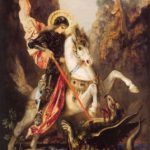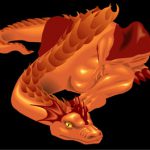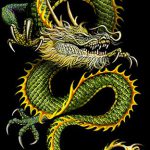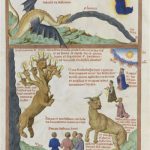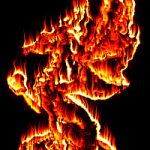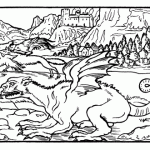There are no trace of dragons as made up of different parts of animals in India. The closest creature is the Naga which inherited of many characteristics of the dragon.
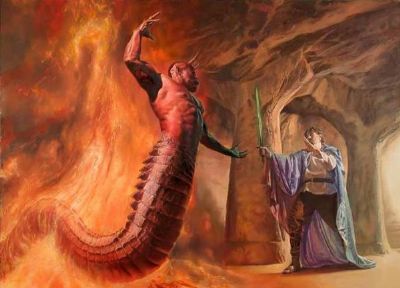
Description: Nagas pseudo-dragons who are usually portrayed as having a human head, serpentine body, and no wings.
Origin: The word Naga is rooted in Sanskrit and means "Serpent". It is one of a handful of rare words surviving the loss of the first universal language. Even in Mexico, we find the "Naga" which becomes "Nagal."
Powers: Nagas were patrons of water and clouds, but could cause flooding or drought if disturbed. In some stories, the naga can shape-change at will from human to snake form
Symbol: In the Esoteric Tradition it is synonymous for Adepts, or Initiates. In India and Egypt, and even in Central and South America, the Naga stands for one who is wise. Nagarjuna of India, for example, is shown with an aura, or halo, of seven serpents which is an indication of a very high degree of Initiation. Nagarjuna are called in Tibetan, Lu-trub.
The symbolism of the seven serpents, usually cobras, are also on Masonic aprons of certain systems in the Buddhistic ruins of Cambodia (Ankhor) and Ceylon. In China, the Naga is given the form of the Dragon and has a direct association with the Emperor and is known as the "Son of Heaven" while in Egypt the same association is termed "King-Initiate". The Chinese are said to have originated with the Serpent demi-gods and even to speak their language, Naga-Krita.
In the Western traditions we find the same ubiquity for the Naga, or Serpent. One simple example is the Ancient Greek Goddess, Athena. She is known as a warrior Goddess as well as the Goddess of Wisdom; her symbol being the Serpent as displayed on her personal shield. An apocryphal tradition says that Apollonius of Tyana, while on a visit to India, was taught by the "Nagas" of Kashmir. (See The Life of Apollonius, by Philostratos). The Serpent’s reputation for positive medicinal and/or life-preserving qualities is still present through seen the employment of the Caduceus.

